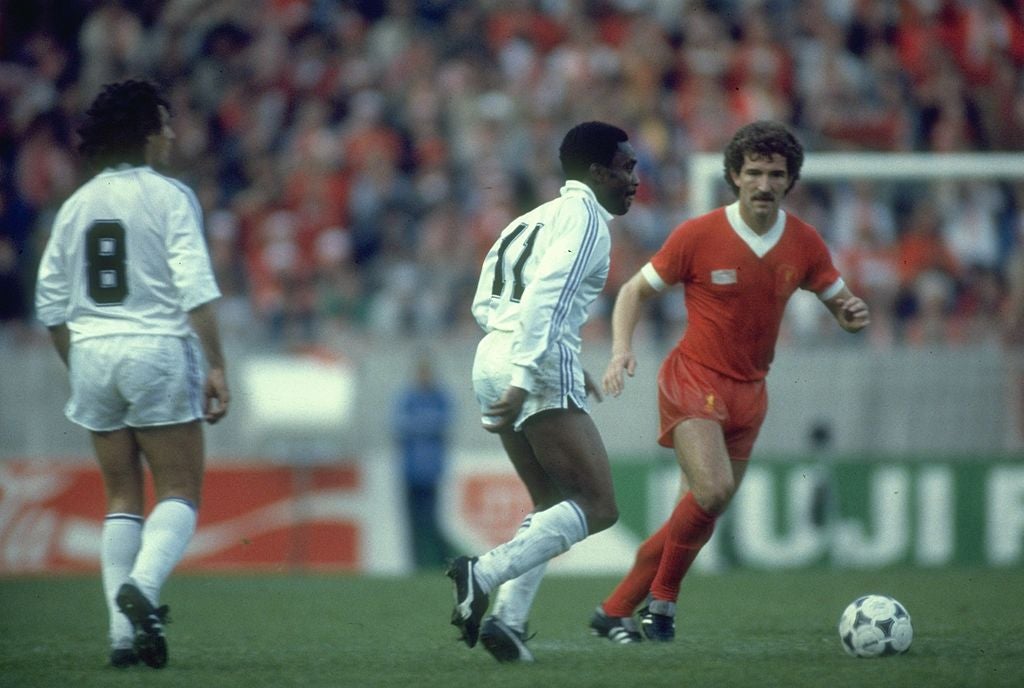
There is something about Paris in the spring. It is a fine place for a final. Liverpool and Real Madrid know this. They have been there before.
In 1981, these two great clubs contested the European Cup final in the French capital. That was their very first meeting. Saturday’s Champions League final will be the ninth and the third time they have vied to become champions of Europe in the continent’s biggest game of the season.
Things were so different 41 years ago that they would hardly be recognisable to the Kopites and Madridistas flocking to the Stade de France over the next 48 hours. The City of Light still has its famous attractions like the Arc de Triomphe and Eiffel Tower but the football experience has changed drastically.
Paris will once again be swamped with Liverpool fans. The majority of them will watch the final on television, though, in bars and on big screens. In 1981, almost every supporter who made the journey to the Parc des Prince got into the stadium. There was little if any corporate presence and the local population were keen to sell on their tickets.
So were the Real fans. Despite a paltry allocation – some things never change – of just 12,000 for each club in a ground that held more than 48,000, Madrid did not sell out. There were gaps in their end and many, including myself, bought a ticket from a Spaniard at face value. It was expensive: 100 francs, almost £9 (about £31 today, according to the Bank of England’s inflation calculator). The lowest-cost seats were 25 francs. For those attending on Saturday, the cheapest tickets are £42 with a restricted view, going up to an eye-watering £579.
Merseyside was in a deep recession in 1981 and many who made the journey to France had to scrimp and save. Those under the age of 26 could buy a Transalpino ticket for £24.50 and take the boat train from London. That ate up most of the Giro cheque for those on the dole who were receiving about £30 per week in benefits.
The streets of Auteuil close to the stadium were tense. The CRS, the riot police, were in a hair-trigger mood. This was only six years after Leeds United fans caused havoc after their team’s 2-0 defeat by Bayern Munich. There were brief skirmishes throughout the day, a couple of which featured the use of CS gas. For most of those exposed to it, this was their first experience of tear gas. Five weeks later the substance would be used on the streets of Liverpool 8 during the Toxteth riots, the first time CS gas was used against crowds in the mainland United Kingdom.
Nevertheless, the relationship between the two sets of fans was very good. There was much swapping of scarves and favours and, apart from CRS muscle-flexing, the day passed off peacefully. Supporters of both sides mingled around Roland Garros where tennis’ French Open was taking place. Arthur Ashe, the only black man to win Wimbledon, received a rousing reception when he walked unaccompanied through the crowds. It was a rough-and-ready but affable atmosphere that is a long way from the slick operation that will be in place at the Stade de France.
Inside the ground things were different, too. Real were not the powerhouse they are now. This was their first final since 1966. Liverpool were about to win their third European Cup in four years.
Kopites regarded Real as a great club fallen on hard times and had no fear of the Spanish giants. In an era where there was little coverage of Spanish football in Britain, few knew what to expect from their opponents apart from the presence of Lawrie Cunningham, the winger who had achieved success with West Bromwich Albion. Liverpool fans had that blind confidence that comes with a lack of knowledge.
The game was not great and was played on a pitch that looked tired at the end of a long season. It was tense and could have gone either way but Alan Kennedy scored the only goal of the game with eight minutes to go.
In the days before shirt advertising was allowed in European competitions, Liverpool were forced to put tape over the Umbro logo on the right side of their shirts.

It fell off a couple of players’ jerseys so the kit manufacturer got their exposure when the team went up to collect the cup. That episode was emblematic of the shambolic way Uefa’s showpiece game was conducted back then.
Afterward, Graeme Souness and Phil Neal were selected for drug testing. By the time they were able to supply a sample, the stadium had emptied, the floodlights were switched off and the team bus had gone back to the hotel to start the celebrations. Souness and Neal were alone and could not find a taxi.
Finally, the Scot jumped in front of a police van and when the angry officers jumped out to make an arrest, Souness defused the situation by waving his medal. The pair were chauffeured to the hotel in the Parisian version of a Black Mariah.
There will be none of this comedic chaos on Saturday.
The Champions League final is a streamlined event with little left to chance except the result. Most of the changes are for the better but a little innocence has been lost. Still, whatever happens on Saturday, Liverpool and Real will always have Paris. Twice.







